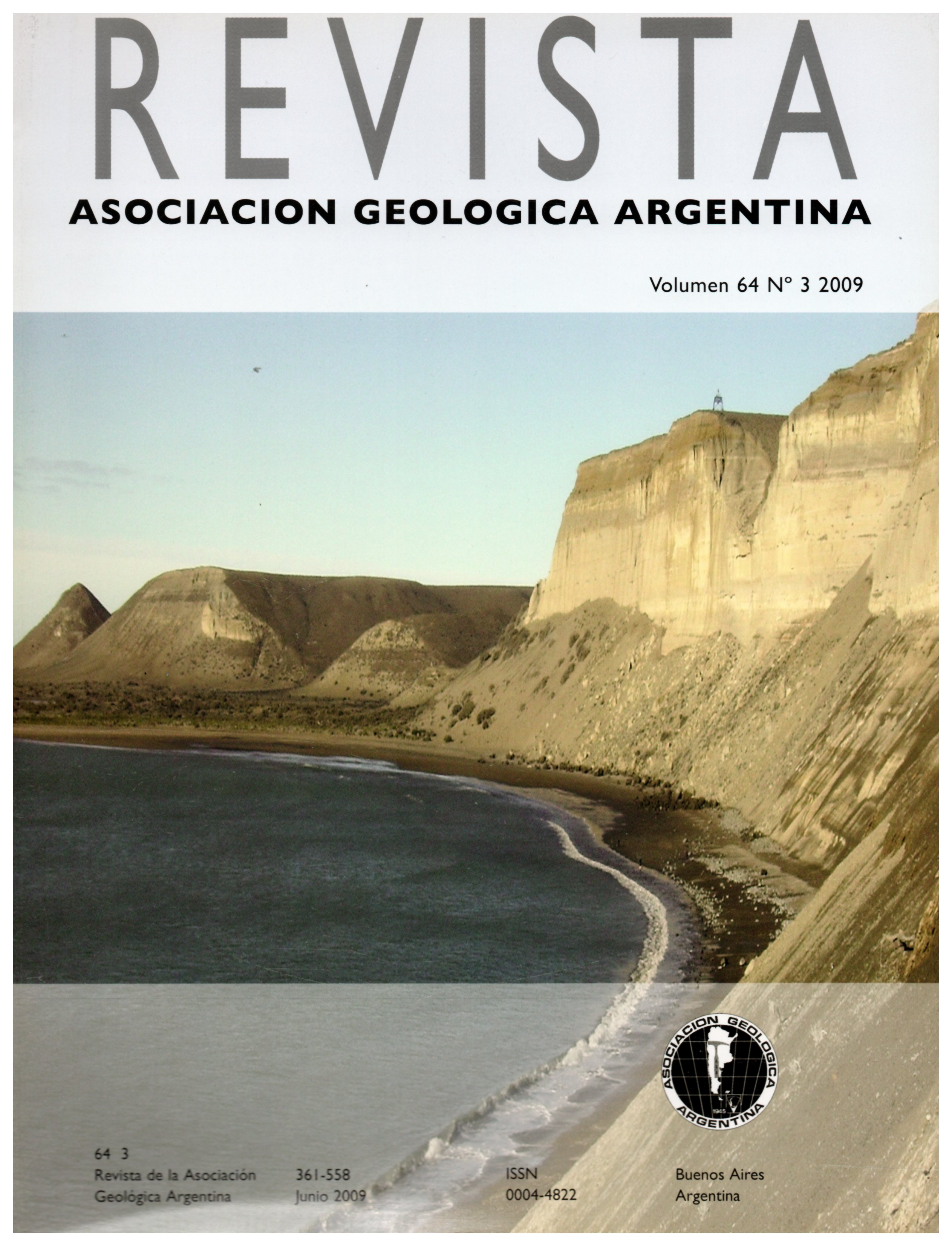Characterization of San Martín pluton and associated tungsten deposits, Valcheta Department, Río Negro Province
Main Article Content
Abstract
The San Martín pluton is formed by abiotitic granite border facies, a leucogranite central facies and cogenetic granitic dykes and aplites. This pluton is a I-type metaluminous granite. It was seated in high crust levels in the middle Upper Permian (262 ± 5.2 Ma). The pluton rocks show a textural evolution from medium grained hypidiomor phicbiotitic granites to fine grained allotriomorphic leucogranites, porphyriticdykes and miarolitic aplites, which suggest magma undercooling, water saturation and exsolution of magmatic volatiles to favor tungsten removal and transportation. There are two vein types in the San Martín pluton: 1) pre-tungsten mineralization veins, and 2) tungsten-bearing veins. The paragenetic sequence began with the first hydrothermal sterile stage (stage I), which formedpre-tungsten mineralization veins and generated potassium alteration in thewall rock. The second hydrothermal stage (stage II) formed the tungsten-bearingveins and deposited quartz, alkali feldspar and wolframite followed by quartzand wolframite. At the end of the stage II, quartz, sulphides, base and precious metal sulphosalts and fluorite were deposited. A magmatic-hydrothermal system model is proposed where the San Martin pluton is the wall rock of the hydrothermal veins whose source is a highly differentiated granite intrusion located below. The granite intrusion would be a late stage of the granitic system of San Martín pluton.
Article Details

This work is licensed under a Creative Commons Attribution-NonCommercial 4.0 International License.
Nota de copyright
Los autores conservan los derechos de autor y garantizan a la revista el derecho de ser la primera publicación del trabajo licenciado según una licencia de atribución Creative Commons que permite a otros compartir el trabajo con el reconocimiento de la autoría y de la publicación en la que se publicó por primera vez.
Declaración de privacidad
Los nombres y direcciones de correo electrónico introducidos en esta revista se usarán exclusivamente para los fines declarados por esta revista y no estarán disponibles para ningún otro propósito u otra persona.

